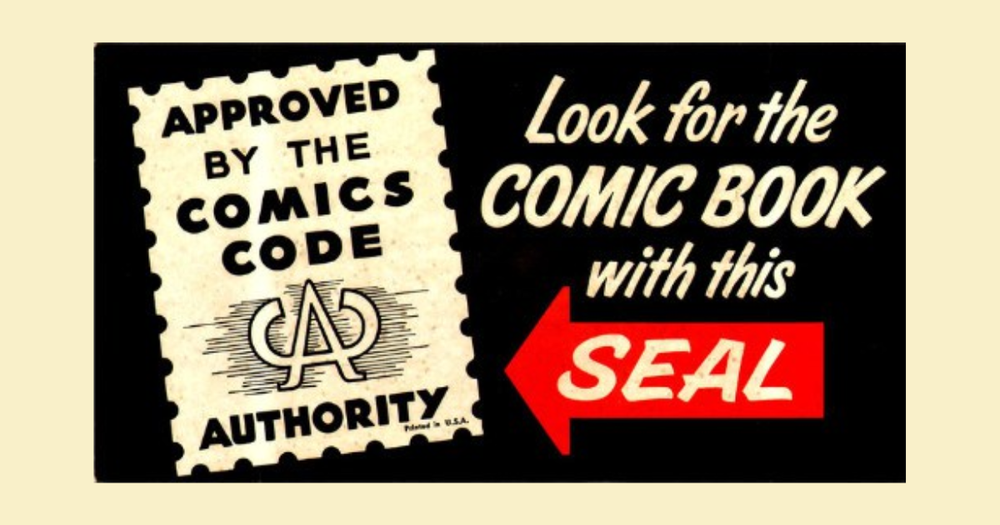The Comics Code Authority

by Grace Suhadolnik, IL Scholar, MLIS ‘26
When we look at today’s list of banned and challenged books, it is common to see comic books and graphic novels appearing among the titles. The American Library Association’s Top 10 Most Challenged Books of 2024 includes two graphic novels, and several additional titles appear on their list of the Top 100 Most Frequently Challenged Books: 2010-2019.
The history of bans on comic books dates back to the post-World War II era, in which a coalition of psychologists, librarians, teachers, and legal experts claimed that the violence featured in popular comic books was contributing to juvenile delinquency. One of the most famous arguments against comics was the 1954 book Seduction of the Innocent by Fredric Wertham, a psychiatrist and anti-violence advocate. The moral panic surrounding comics reached such a high level that a Senate Subcommittee on Juvenile Delinquency was convened to investigate “the problem of horror and crime comic books” and determine “what damage, if any, is being done to our children’s minds.”
The amount of negative press generated from the Senate hearings was so great that comic book publishers were pressured to respond with their own regulatory code. The Comics Code of 1954 consisted of 41 standards restricting the content published in comic books. Under this new system, comics were reviewed, with accepted issues receiving a stamp marking them as “Approved by the Comics Code Authority,” while problematic issues would be edited or rejected before publication.
The Comics Code Authority severely limited the comic book industry, particularly horror and crime comics. Many publishers pivoted to bring back the superhero genre that had been popular in the 1930s and 40s, but creators found it difficult to include any amount of realism in their comics without violating the code. Eventually, thanks to push back from major comic book publishers (particularly Marvel Comics), the Comics Code was revised to loosen some of the restrictions—first in 1971 and again in 1989. Changes in publishing and distribution practices also led the code to become less relevant, as major creators now had avenues to sell their comics without the approval of the Comics Code Authority. The era of the Comics Code Authority officially ended when its last two members—DC Comics and Archie Comics—withdrew in 2011.
Today, the Comic Book Legal Defense Fund exists as an organization dedicated to fighting new comic book censorship efforts and protecting First Amendment Rights of comic book industry professionals by providing legal assistance, representation, and education. The Comic Book Legal Defense Fund is also one of the annual sponsors of Banned Books Week.
To learn more about the Comics Code Authority and Banned Books Week, visit the display on the first floor of Bird Library (October 6-10) and check out the resources in our 2025 Banned Books Week research guide.
